The Culinary Elite: Who’s The Best Chef in the World?
The best chef in the world currently is Dabiz Muñoz, who has been named The Best Chef for three consecutive years (2021-2023) according to The Best Chef Awards. However, different ranking systems use various criteria to determine culinary excellence.
Here’s a quick breakdown of the current top 5 chefs according to The Best Chef Awards 2023:
- Dabiz Muñoz (Spain) – Known for his free-spirited, rule-breaking cuisine at DiverXO
- Albert Adrià (Spain) – Brother of Ferran Adrià and a culinary innovator
- Ana Roš (Slovenia) – Self-taught chef who expresses her region and character through cuisine
- René Redzepi (Denmark) – Pioneer of New Nordic cuisine at Noma
- Andoni Luis Aduriz (Spain) – Known for avant-garde Basque cuisine
When we talk about the best chef in the world, we’re entering a field where art, science, tradition, and innovation collide on a plate. These culinary masters don’t just cook food—they tell stories, preserve heritage, push boundaries, and create unforgettable experiences.
The concept of the “best” chef is subjective and constantly evolving. While some ranking systems like The Best Chef Awards focus on innovation and peer recognition, others like the Michelin Guide emphasize consistency and exceptional technique. For instance, if we measure by Michelin stars, the late Joël Robuchon holds the record with an astonishing 32 stars throughout his career.
What makes these chefs extraordinary isn’t just their technical skill, but their ability to transform ingredients into something that touches both the palate and the soul. As the legendary Joël Robuchon once said, “Cooking is an art and patience a virtue… Careful shopping, fresh ingredients and an unhurried approach are nearly all you need.”
For food enthusiasts seeking to experience the world’s best cuisine, understanding who’s at the top of the culinary world can be your gateway to extraordinary dining trips.

Best chef in the world terms to remember:
What Makes the Best Chef in the World?
What transforms a talented cook into the best chef in the world? It’s not just about collecting Michelin stars or appearing on TV shows. The culinary masters who reach the pinnacle of their profession share several special qualities that truly set them apart.
At the heart of every extraordinary chef is a spirit of innovation and creativity. The best chefs in the world aren’t content to follow the crowd—they blaze new trails that others eventually follow. Think of Ferran Adrià, whose molecular gastronomy at El Bulli completely reimagined what food could be, or René Redzepi, whose foraging-focused cuisine at Noma inspired chefs worldwide to look more closely at what grows in their own backyards.
Behind the creative flair lies years of technical mastery. These culinary giants have spent countless hours perfecting everything from the most basic knife skills to the most complex sauce preparations. As Thomas Keller beautifully puts it, “It’s not about perfection, it’s about the process of trying to get there.” This dedication to craft is what allows great chefs to make the extraordinary look effortless.
The kitchen’s most brilliant minds understand that their legacy extends beyond their own creations. Through leadership and mentorship, they shape the next generation of culinary talent. Joël Robuchon helped mold the young Gordon Ramsay, while Alain Ducasse has created an entire educational ecosystem that has launched hundreds of successful culinary careers.
What separates a one-hit wonder from a true culinary legend? Consistency. The best chefs in the world deliver magic on the plate night after night, year after year. This unwavering commitment to excellence is what earns and maintains those coveted Michelin stars and devoted followings.
Every true culinary master develops a signature style that makes their food instantly recognizable. Whether it’s Massimo Bottura’s artistic plating that looks like edible modern art or Heston Blumenthal’s scientific approach that transforms familiar flavors into mind-bending experiences, great chefs develop a distinctive voice that speaks through their food.
Sustainability and ethics have become essential ingredients in the recipe for culinary greatness. Forward-thinking chefs like Dan Barber don’t just create delicious meals—they champion environmental responsibility and ethical sourcing, reshaping how we think about our food systems and their impact on the planet.
Who Is the Best Chef in the World Right Now?
If we’re looking at the latest global rankings, Dabiz Muñoz stands tall as the best chef in the world according to The Best Chef Awards—a title he’s impressively held for three consecutive years (2021-2023).
At his three-Michelin-starred restaurant DiverXO in Madrid, Muñoz creates what many describe as culinary theater that playfully breaks all the rules. His cooking style is boldly free-spirited, weaving global influences through Spanish foundations to create dishes that are both technically dazzling and emotionally stirring.
What makes Muñoz’s reign at the top particularly remarkable is his staying power. In the fast-moving culinary world where today’s innovation is tomorrow’s old news, maintaining the number one position for three years straight speaks volumes about his creativity and relevance.
Of course, different ranking systems might crown different culinary kings and queens. If we measured by current Michelin star count alone, Alain Ducasse would wear the crown with his empire boasting 21 stars across multiple restaurants.
How Rankings Decide the “Best Chef in the World”
The coveted title of best chef in the world isn’t handed down from a single authority—it’s determined by several influential ranking systems, each with its own unique approach to measuring culinary excellence.
The Michelin Guide stands as perhaps the most venerable judge of fine dining. Since 1900, this guide has deployed anonymous inspectors who visit restaurants multiple times before awarding their famous stars. They evaluate based on five key criteria: ingredient quality, mastery of cooking techniques, the chef’s personality expressed through their cuisine, value for money, and consistency across visits. While Michelin technically rates restaurants rather than individual chefs, a chef’s total star count has become an unofficial measure of their standing in the culinary world.
Taking a different approach, The Best Chef Awards (established in 2017) focuses directly on the chefs themselves. Their system combines peer voting with input from a professional selection committee, placing greater emphasis on innovation and current impact than on long-term consistency. Chefs who score 40% or more of the maximum possible points earn the distinction of “World Class” status.
The World’s 50 Best Restaurants ranks establishments rather than individual chefs, but making this prestigious list can dramatically lift a chef’s global reputation. The rankings come from the votes of over 1,000 international restaurant industry experts who bring their collective knowledge to the selection process.
In America, the James Beard Awards celebrate culinary excellence with a focus on American chefs, though their recognition carries significant international weight. These awards consider a chef’s broader contribution to American cuisine through excellence not just in food, but also in beverage programs, service quality, and overall operations.
Each ranking system has its own perspective and potential biases. Michelin has faced criticism for Eurocentrism and favoring French techniques, while newer awards like The Best Chef Awards have been noted for emphasizing contemporary approaches and media presence.
For passionate food travelers, understanding these different ranking systems provides valuable context when planning culinary trips. At The Dining Destination, we encourage experiencing restaurants recognized by various awards to develop your own personal understanding of what truly makes exceptional cuisine worth traveling for.
The Top 10 Chefs You Need to Know
The culinary world is filled with extraordinary talent, but certain chefs have risen above the rest to leave an indelible mark on global gastronomy. While rankings may shift year to year, these ten legendary figures have shaped modern cuisine in profound ways that extend far beyond their kitchens.

The late Joël Robuchon stands as a towering figure in culinary history. With an unprecedented 32 Michelin stars throughout his career, this French master liftd simple ingredients to sublime heights. His pommes purée (mashed potatoes) became the stuff of legend—so silky and perfect that chefs worldwide still attempt to replicate their ethereal texture. Though he left us in 2018, Robuchon’s influence lives on through the countless chefs he mentored.
Alain Ducasse continues to define contemporary French cuisine with remarkable vision. Currently holding 21 Michelin stars across his global restaurant empire, Ducasse’s influence extends into culinary education, cookbooks, and even aerospace—he famously created meals for astronauts aboard the International Space Station. Talk about taking fine dining to new heights!
Beyond his fiery television persona, Gordon Ramsay has built a formidable culinary legacy with 17 Michelin stars throughout his career. His flagship Restaurant Gordon Ramsay has maintained three Michelin stars since 2001—a testament to his unwavering commitment to excellence even as he’s become a global media personality.
As the most decorated female chef in the world, Anne-Sophie Pic has earned 10 Michelin stars through her delicate, aromatic cuisine. What makes her story particularly compelling is how she reclaimed her family restaurant’s lost third star through sheer determination and intuitive talent—despite having no formal culinary training. Her willingness to accept unexpected flavor combinations has created a distinctive culinary voice that’s entirely her own.
The René Redzepi transformed our understanding of what fine dining could be through his restaurant Noma. As the pioneer of New Nordic cuisine, his passionate accept of foraging, fermentation, and hyperlocal ingredients has inspired chefs worldwide to refind their own local ecosystems. When Noma was named the world’s best restaurant multiple times, it wasn’t just a win for Redzepi—it was validation for a whole new approach to cooking.
At Osteria Francescana, Massimo Bottura reimagines Italian classics with conceptual brilliance and artistic flair. His three Michelin stars speak to his technical prowess, but it’s his humanitarian work through Food for Soul that truly showcases his heart. During the pandemic, his Kitchen Quarantine Instagram series brought warmth and cooking knowledge to households worldwide—exactly when they needed it most.
Rising star Rasmus Munk has quickly established himself among the best chefs in the world, ranking #6 in The Best Chef Awards 2023. At Alchemist in Copenhagen, he creates provocative, theatrical dining experiences that address social and environmental issues through what he calls “holistic cuisine.” His immersive approach shows how dining can be both delicious and thought-provoking.
The self-taught Ana Roš has put Slovenian cuisine on the global map through her two-Michelin-starred restaurant Hiša Franko. Named World’s Best Female Chef in 2017, Roš creates dishes that tell the story of her region’s landscape and seasons with remarkable authenticity and personal expression.
Albert Adrià has successfully emerged from the shadow of his famous brother Ferran to establish himself as a culinary force in his own right. Entering directly at #2 in The Best Chef Awards 2023, he’s renowned for his innovative approach to pastry and ability to create diverse, successful restaurant concepts that push boundaries while remaining deeply satisfying.
Along with his brothers, Joan Roca has transformed El Celler de Can Roca into a temple of avant-garde Spanish cuisine. Their restaurant has twice topped the World’s 50 Best Restaurants list, combining technical precision with emotional storytelling through food that honors Catalan traditions while looking firmly toward the future.
What unites these diverse culinary voices—beyond their obvious talent—is an unwavering commitment to excellence and a willingness to push boundaries. Whether through technical innovation, cultural preservation, or environmental advocacy, these best chefs in the world have transformed dining into something that nourishes not just our bodies but our imaginations.
Star Power: Who Holds the Most Michelin Stars in History?
When it comes to the culinary world’s most prestigious accolade, no one shines brighter than the late Joël Robuchon. With an astonishing 32 Michelin stars accumulated across his restaurant empire at his peak, many consider him the best chef in the world from a historical perspective.
The competition for stellar recognition remains fierce among the culinary elite. Alain Ducasse currently holds 21 stars across his restaurants, while Gordon Ramsay has earned 17 stars throughout his career (though currently holds 8). French innovator Yannick Alléno boasts 16 stars, with Pierre Gagnaire following at 14. Spanish master Martin Berasategui and Italian virtuoso Enrico Bartolini are tied at 12 stars each, while Anne-Sophie Pic has earned 10 stars—the most ever held by a female chef.
What makes these achievements truly remarkable is understanding the Michelin Guide’s notoriously rigorous standards. Even earning a single star requires exceptional quality, while three stars—the guide’s highest honor—indicates “exceptional cuisine worth a special journey.” The anonymous inspectors may visit at any time, creating immense pressure to maintain perfection day after day, year after year.
The emotional investment in these stars is profound. As Gordon Ramsay once confessed after losing a star at one of his restaurants: “I started crying when I lost my stars. It’s like losing a girlfriend. You want her back.” This vulnerability from such a famously tough chef speaks volumes about what these accolades mean to those who earn them.
For food enthusiasts planning their next culinary trip, experiencing a meal at a Michelin-starred restaurant offers a window into extraordinary craftsmanship. We at The Dining Destination have found that even a meal at a one-star establishment can transform your understanding of what makes the best chefs in the world truly exceptional—the precision, creativity, and attention to detail are simply on another level.
Influential Female Chefs Shaping the Scene
For too long, professional kitchens were considered a man’s domain. Today, that outdated notion is being thoroughly disproven as female chefs rise to prominence, bringing fresh perspectives and innovative approaches that have earned them places among the best chefs in the world.
Anne-Sophie Pic stands as a towering figure with 10 Michelin stars across her restaurants—the most decorated female chef globally. What makes her story particularly remarkable is that she’s entirely self-taught. When she took over Maison Pic after her father’s death, the restaurant had lost its third Michelin star. Through sheer determination and an intuitive approach to flavor that emphasizes aromatic complexity, she not only restored that third star but built an international culinary empire. Her willingness to accept unexpected combinations—like white millefeuille with jasmine jelly and voatsiperifery pepper—has created a distinctive culinary signature that’s impossible to imitate.
Before her retirement in 2018, Carme Ruscalleda held 7 Michelin stars—a record for female chefs at that time. Her restaurant Sant Pau in Spain earned three Michelin stars for creative Catalan cuisine that celebrated local traditions while embracing innovation. Perhaps most impressively, her Tokyo outpost also earned two stars, demonstrating her rare ability to translate her culinary vision across vastly different cultures and ingredients.
In the United States, Dominique Crenn made history as the first female chef to earn three Michelin stars at her San Francisco restaurant Atelier Crenn. Her approach, which she calls “poetic culinaria,” presents dishes alongside poems, creating a multisensory experience that challenges conventional fine dining formats. “I’m not cooking for myself,” Crenn often says. “I’m cooking to create memories for others.”
The collaborative partnership between Elena Arzak and her father Juan Mari has kept their family restaurant Arzak at the forefront of avant-garde Basque cuisine for decades. With three Michelin stars, their approach honors tradition while embracing cutting-edge techniques—a balance that few restaurants maintain so successfully over generations.
British chef Clare Smyth made history by becoming the first female chef in the UK to earn three Michelin stars at her restaurant Core. After serving as Chef Patron at Gordon Ramsay’s flagship restaurant, she established her own culinary identity with technically perfect dishes celebrating British produce. Her signature “potato and roe” lifts the humble spud to star status—much like her own rise in the culinary world.
These pioneering women aren’t just achieving personal success—they’re actively reshaping industry culture. Many mentor young female chefs and advocate for more inclusive kitchen environments. As Anne-Sophie Pic wisely noted, “The kitchen is not a question of gender, but of personality and sensitivity.”
For travelers seeking truly comprehensive culinary experiences, we at The Dining Destination strongly recommend including restaurants led by these extraordinary female chefs in your gastronomic explorations. Their unique voices and approaches offer perspectives that have been too long underrepresented in fine dining, making their contributions not just delicious but culturally essential.
Awards, Rankings & Michelin Stars Demystified
The world of culinary awards can feel like a complex tasting menu – intricate, layered, and sometimes overwhelming to newcomers. Let’s break down the prestigious recognitions that crown the best chefs in the world and what they actually mean for food lovers like us.
Michelin Stars continue to reign as the most coveted culinary honor. What started in 1900 as a simple guide for French motorists has evolved into gastronomy’s ultimate benchmark, now evaluating restaurants across more than 30 countries. The beauty of the Michelin system lies in its mystery – anonymous inspectors dine incognito, paying their own bills, and visiting multiple times before making judgments based on five key criteria: ingredient quality, flavor mastery, the chef’s personality expressed through cuisine, value for money, and consistency. The three-star rating tells a compelling story:
- ★: “A very good restaurant in its category” – worth a stop
- ★★: “Excellent cooking, worth a detour” – plan your day around it
- ★★★: “Exceptional cuisine, worth a special journey” – plan your vacation around it
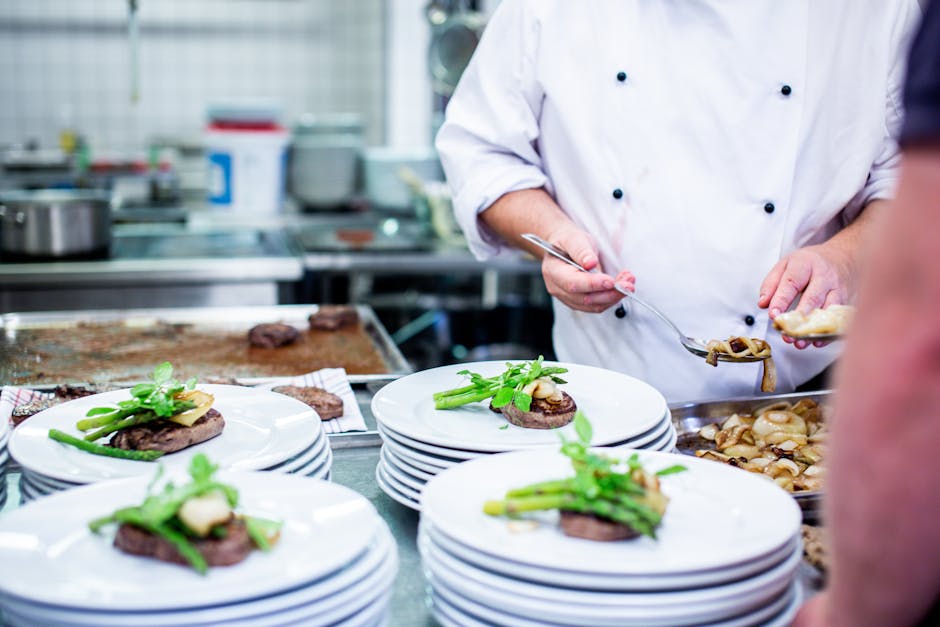
The World’s 50 Best Restaurants burst onto the scene in 2002 as Michelin’s more contemporary, dynamic cousin. Rather than awarding stars, this system creates an actual ranking based on votes from over 1,000 international food experts. The list has been credited with shining a spotlight on innovative restaurants in previously overlooked culinary regions, from Peru to Slovenia. While Michelin tends to favor technical perfection and tradition, The World’s 50 Best often celebrates risk-taking and culinary boundary-pushing.
The Best Chef Awards, the new kid on the block since 2017, takes a refreshingly different approach by focusing on the individual rather than the restaurant. By combining professional jury evaluations with peer voting, these awards measure a chef’s current impact and innovation within the industry. Dabiz Muñoz’s impressive three-year reign at the top speaks to both his consistent excellence and his contemporary relevance.
For those who love competition drama, the Bocuse d’Or delivers culinary theater at its finest. This biennial event, often called the “Olympics of cooking,” tests chefs’ technical skills and creativity as they perform under immense pressure before a live, cheering audience. Named after legendary French chef Paul Bocuse, it celebrates both traditional techniques and cutting-edge innovation.
In America, the James Beard Awards serve as the country’s culinary Oscars, recognizing excellence across categories from Best Chef (by region) to Outstanding Restaurant. While primarily focused on the American food scene, these awards carry significant international prestige and have helped launch many global careers.
According to scientific research on expertise, the path to culinary greatness typically requires at least 10,000 hours of practice – something every award-winning chef has invested many times over.
For us at The Dining Destination, we love how these different award systems provide valuable signposts for culinary trips. However, we always remind our readers that the truly “best” dining experience remains deeply personal. Sometimes the most memorable meal comes from an unknown chef cooking with heart in a restaurant that’s never seen an award ceremony. That said, understanding these prestigious recognitions helps food lovers appreciate the extraordinary skill, creativity, and dedication that defines the best chefs in the world.
Special Awards Beyond the Stove
The culinary spotlight has widened beautifully in recent years, illuminating talents beyond traditional cooking roles. These specialized awards celebrate the rich diversity that makes modern gastronomy such an exciting world to explore.
Best Chef Pastry awards acknowledge that creating extraordinary desserts requires a wholly different skillset than savory cooking. Where savory chefs might rely on intuition and adjusting to taste, pastry demands scientific precision, patience, and artistic vision. Pastry innovators like Jordi Roca (recognized multiple times as World’s Best Pastry Chef and specially honored at The Best Chef Awards 2023) have transformed desserts from mere sweet endings into artistic centerpieces that can outshine the main course. Cédric Grolet’s hyper-realistic fruit creations have similarly liftd pastry to a genuine art form worthy of Instagram fame.
The Best Chef Pizza award might raise eyebrows initially, but it reflects growing appreciation for pizza as serious gastronomy rather than just casual food. Franco Pepe, recipient of this honor at The Best Chef Awards 2023, has revolutionized pizza-making at his restaurant Pepe in Grani in Italy. His approach combines obsessive attention to dough fermentation (sometimes up to 72 hours) with innovative seasonal toppings and techniques that honor tradition while pushing boundaries. One bite of his creations quickly explains why pizza deserves its own category of excellence.
The world of culinary Science Awards celebrates chefs who blend cooking with scientific inquiry. Recipients like Andoni Luis Aduriz of Mugaritz have formed fascinating partnerships with research institutions to develop techniques that expand our understanding of food itself. These chef-scientists explore everything from fermentation biochemistry to the neuroscience of flavor perception, creating dishes that stimulate both the mind and palate.
The Food Art recognition honors chefs whose presentations blur boundaries between cuisine and visual arts. The 2023 award went to Rasmus Munk, whose restaurant Alchemist creates immersive, thought-provoking dining experiences addressing social and environmental issues. A meal at Alchemist might include 50+ servings presented in rooms with changing projections, soundscapes, and theatrical elements – dining reimagined as multisensory art installation.
Beyond specialized awards, the best chefs in the world now build their reputations through diverse channels:
Media presence has become crucial in establishing global culinary fame. Television shows like “Chef’s Table” with its cinematic food portraits and competition programs like “MasterChef” have introduced extraordinary culinary talents to millions who might never visit their restaurants. Gordon Ramsay has leveraged his media savvy to become perhaps the most recognizable chef globally, bringing his passion for excellence to audiences far beyond his restaurant kitchens.
Cookbook publishing allows chefs to share their philosophies and techniques with home cooks worldwide. Massimo Bottura’s vibrant “Never Trust a Skinny Italian Chef” and René Redzepi’s thoughtful “Noma: Time and Place in Nordic Cuisine” have become influential texts that shape how we think about food’s cultural importance.
Social media has democratized culinary fame in fascinating ways. During the COVID-19 pandemic, Bottura’s warm, family-centered “Kitchen Quarantine” Instagram sessions brought his expertise directly into home kitchens around the world. Meanwhile, younger chefs have acceptd TikTok’s short-form videos to reach new audiences with quick techniques and behind-the-scenes glimpses of professional kitchens.
According to our partners at Cristaux awards, the physical design of culinary trophies themselves has evolved to reflect the artistic nature of top-level cooking.
These diverse recognitions show how the chef’s role has beautifully evolved. Today’s best chefs in the world aren’t just cooks but cultural figures whose influence extends into art, science, media, education, and social change – making this an incredibly exciting time to be passionate about food.
Learning from the Legends: Techniques, Innovation, Influence
The best chefs in the world have done far more than create delicious meals—they’ve transformed our entire relationship with food. Their groundbreaking approaches have rippled through kitchens worldwide, influencing everything from fine dining establishments to home cooking experiments.
When Ferran Adrià began experimenting with molecular gastronomy at El Bulli, he forever changed culinary possibilities. His scientific approach introduced techniques like spherification—creating those delicate, caviar-like bubbles that burst with flavor—alongside playful foams and dramatic liquid nitrogen preparations. As Adrià himself beautifully explained: “The ideal is to take a well-known dish, transform its ingredients, alter its texture, form or temperature so that it preserves its essence but looks completely different.” This philosophy opened doors for chefs to think beyond traditional constraints.
Meanwhile, René Redzepi’s New Nordic Cuisine at Noma sparked a global revolution in local sourcing and refindy of forgotten ingredients. His passionate commitment to foraging—bringing wild, uncultivated plants into fine dining—encouraged chefs worldwide to explore their own backyards with fresh eyes. This movement has given us restaurants proudly showcasing indigenous ingredients that might have been overlooked just a decade ago.
Environmental consciousness has become central to modern gastronomy, with sustainability and zero-waste cooking championed by visionaries like Massimo Bottura. His Food for Soul initiative brilliantly transforms surplus ingredients into nourishing meals for vulnerable communities, proving that fighting food waste can be both ethical and delicious. Dan Barber’s thoughtful farm-to-table philosophy at Blue Hill similarly demonstrates that environmental responsibility and culinary excellence naturally complement each other.
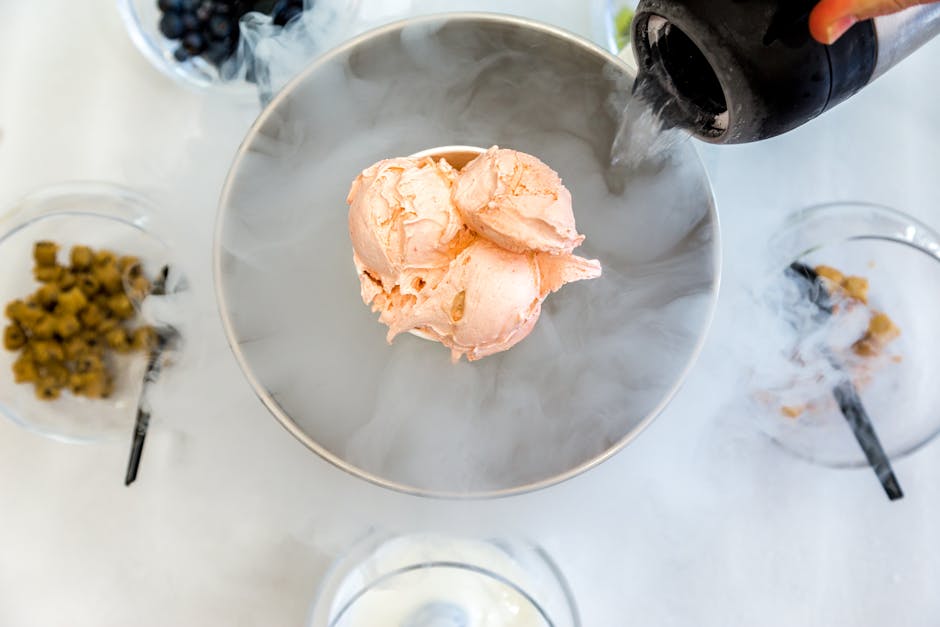
When Alain Passard boldly removed red meat from his three-Michelin-starred L’Arpège in 2001 to focus on vegetables, many thought he’d lost his mind. His cuisine naturelle approach—celebrating vegetables with minimal manipulation—seemed radical at the time. Today, his influence is evident in the plant-forward menus of countless restaurants, showing how a single chef’s vision can reshape dining priorities.
The thoughtful cross-cultural fusion pioneered by chefs like Gaggan Anand has liftd food beyond geographical boundaries. At his groundbreaking Bangkok restaurant, Anand combined traditional Indian flavors with modernist techniques, creating something genuinely new rather than superficially “fusion.” This approach has inspired a generation of chefs to explore cultural intersections with depth and respect.
Perhaps most touchingly, storytelling through food has become a powerful means of connection. Bottura’s famous “Oops! I Dropped the Lemon Tart”—born from a kitchen accident when a dessert fell—transformed a mistake into a signature dish celebrating the beauty of imperfection. This narrative approach invites diners to experience not just flavors but emotions and ideas.
What’s remarkable is how these innovations have spread beyond elite restaurants. Through cookbooks, television shows, social media, and the movement of chefs between establishments, these techniques and philosophies have permeated global food culture. Even if you’ve never dined at Noma, its influence might be present in your neighborhood restaurant’s house-fermented vegetables or locally foraged herbs.
For those passionate about cooking, the most valuable lesson from the best chefs in the world isn’t any specific technique—it’s their mindset of boundless curiosity, profound respect for ingredients, and fearless innovation. At The Dining Destination, we believe understanding these contributions provides a framework for developing your own culinary voice, whether you’re cooking professionally or simply preparing dinner for loved ones.
Iconic Restaurants Run by the Best Chefs in the World
Behind every best chef in the world stands a remarkable restaurant that serves as both creative laboratory and culinary stage. These extraordinary establishments have become pilgrimages for food lovers worldwide, each offering a unique expression of its creator’s vision.
El Bulli may have closed its doors in 2011, but Ferran Adrià’s legendary restaurant on Catalonia’s Costa Brava remains perhaps the most influential dining establishment in modern history. Named the world’s best restaurant five times, El Bulli operated with a fascinating rhythm—open only six months each year, with the remaining time dedicated to creative development in their Barcelona workshop. The numbers were staggering: over two million reservation requests annually for just 8,000 available seats. Though you can no longer dine there, Adrià’s legacy continues through the elBulli Foundation, sharing culinary innovation with future generations.
In a modest building in Modena, Italy, Osteria Francescana showcases Massimo Bottura’s brilliant reinterpretation of Italian classics. This three-Michelin-starred jewel has twice topped the World’s 50 Best Restaurants list, delighting guests with conceptual dishes like “Five Ages of Parmigiano Reggiano,” which explores the same cheese in different textures and forms. What makes Bottura’s approach so compelling is how it balances technical wizardry with emotional resonance—each plate tells a story of Italian culture, memory, and tradition.
From its Copenhagen home, Noma has fundamentally redefined Nordic cuisine under René Redzepi’s visionary leadership. Named the world’s best restaurant five times, Noma’s commitment to foraged ingredients and fermentation techniques has influenced chefs globally. The restaurant operates with beautiful seasonality: seafood in winter, vegetables in summer, and game in fall. In a bittersweet development for food lovers, Noma has announced it will close its current format in 2024, changing into a food laboratory with occasional pop-up dining experiences.
In California’s lush Napa Valley, a stone cottage houses The French Laundry, Thomas Keller’s flagship restaurant that has maintained three Michelin stars since 2007. Its daily-changing tasting menus showcase French techniques applied to impeccable American ingredients, many coming from the restaurant’s famous garden just across the street. This approach embodies Keller’s philosophy of using the finest seasonal ingredients at their peak—simple in concept but in execution.
The current best chef in the world, Dabiz Muñoz, creates what he calls “brutal cuisine” at DiverXO in Madrid. This three-Michelin-starred playground delivers technically perfect yet wildly creative dishes in a theatrical setting designed to provoke emotional responses. Muñoz blends Spanish foundations with global influences, creating unexpected presentations that challenge and delight diners in equal measure.
Perched beautifully on the French Riviera near the Italian border, Mirazur was named the world’s best restaurant in 2019 under Chef Mauro Colagreco. The restaurant’s unique geography inspires its cuisine, drawing from the sea, mountains, and Mirazur’s extensive gardens. As a UNESCO Goodwill Ambassador for biodiversity, Colagreco weaves environmental consciousness throughout his cooking, creating dishes that celebrate and protect the natural world.
What makes these restaurants truly extraordinary isn’t just the food—it’s the complete experience they create. From service style to interior design to the story behind each dish, these establishments represent the fullest expression of a chef’s philosophy and vision.
For serious food enthusiasts, experiencing these iconic restaurants provides insight into what makes the best chefs in the world truly exceptional. At The Dining Destination, we consider these culinary pilgrimages essential for anyone seeking to understand the heights of contemporary gastronomy—moments that can transform not just how you eat, but how you see the world.
How Aspiring Cooks Can Emulate the Best Chef in the World
For those inspired by the best chefs in the world and dreaming of their own culinary greatness, the journey combines traditional training, hands-on experience, and never-ending curiosity. Here’s how aspiring chefs can follow in the footsteps of the masters:
Formal culinary education provides that crucial foundation in classical techniques and food science. Many culinary stars studied at prestigious institutions like The Culinary Institute of America, Le Cordon Bleu, or Italy’s Alma. But there’s something wonderfully encouraging about knowing alternative paths exist—Ana Roš is entirely self-taught, while Massimo Bottura studied law before finding his true calling in the kitchen. Your passion can find its way, regardless of your starting point.
The tradition of staging—those unpaid internships in prestigious kitchens—remains an invaluable part of culinary education. Many top chefs speak of these experiences as transformative. Gaggan Anand still credits his time at Ferran Adrià’s elBulli research team for fundamentally reshaping his approach to cooking. These immersive experiences expose young chefs to different philosophies and standards that simply can’t be learned from books or videos.
For those with a competitive streak, cooking competitions can accelerate both growth and visibility. Contests like the Bocuse d’Or, San Pellegrino Young Chef, and various national championships push chefs to perform under pressure while showcasing their creativity. Rising stars like Rasmus Munk and Dabiz Muñoz gained early recognition through competitive cooking, using these platforms to demonstrate their unique perspectives.
The world’s greatest chefs consistently emphasize the importance of travel and cultural immersion. René Redzepi’s regular food research trips inform Noma’s innovative approach, while Mauro Colagreco’s cuisine beautifully reflects his Argentine heritage, French training, and Italian border location. Understanding diverse food cultures provides inspiration that transcends what cookbooks alone can offer. As one chef told me, “You can read about a cuisine for years, but nothing replaces the experience of eating it in its homeland.”
Finding the right mentor can make all the difference in a culinary career. Gordon Ramsay worked under Marco Pierre White and Joël Robuchon early on, while Thomas Keller speaks warmly of his mentor Roland Henin teaching him to cook with all his senses. The right mentor provides not just technical knowledge but wisdom about navigating the industry and developing your unique voice.
What truly distinguishes the greats is their commitment to continuous learning and research. Many top chefs dedicate significant time to experimentation—Ferran Adrià famously closed El Bulli for six months each year to focus on research, while Bottura constantly studies art, music, and literature for culinary inspiration. This hunger for knowledge keeps their work fresh and evolving.
Thankfully, online resources and master classes have democratized access to culinary education. Platforms like MasterClass feature courses from Thomas Keller, Gordon Ramsay, and Alice Waters, while countless YouTube channels and Instagram accounts provide windows into professional techniques. During the pandemic, Massimo Bottura’s heartwarming Kitchen Quarantine Instagram series shared professional insights with home cooks worldwide, breaking down barriers between professional and home kitchens.
The path to becoming one of the best chefs in the world demands immense dedication, resilience, and passion. As Thomas Keller wisely advises aspiring chefs: “It’s not about perfection; it’s about the process of trying to get there.” This pursuit of excellence—rather than accolades themselves—is what unites the world’s greatest culinary talents.
At The Dining Destination, we encourage culinary enthusiasts to incorporate these learning approaches into their own journeys, whether pursuing professional careers or simply bringing more joy to their home cooking. After all, the most important ingredient in any great dish is the passion behind it.
Frequently Asked Questions about the Best Chef in the World
What is the significance of a Michelin star?
When we talk about the best chef in the world, Michelin stars inevitably enter the conversation. These coveted stars represent culinary excellence at its highest level, though their origin story might surprise you. The Michelin Guide was actually created by a tire company looking to encourage French drivers to hit the road (and wear out their tires in the process). Today, it’s transformed into gastronomy’s most prestigious global rating system.
The three-tier star system tells a story about how far you should travel for a meal:
- One star means “a very good restaurant in its category”
- Two stars indicates “excellent cooking, worth a detour”
- Three stars signifies “exceptional cuisine, worth a special journey”
What makes these stars so special isn’t just their scarcity but the rigorous evaluation process behind them. Anonymous inspectors visit restaurants multiple times, always paying their bills in full. They judge based on five elements: ingredient quality, flavor mastery and cooking techniques, the chef’s personality expressed through their food, value for money, and consistency across visits.
For chefs, that first star can be life-changing. Bookings typically jump by at least 20% overnight. Reaching the three-star pinnacle places a chef among the global elite – only about 140 restaurants worldwide currently hold this distinction. It’s culinary rarefied air.
Yet the pressure of maintaining stars creates its own challenges. The weight of expectations has led some chefs, like Sébastien Bras in France, to actually request removal from the guide, preferring the freedom to cook without the constant pressure of potential demotion. As one chef put it, “Stars are like beautiful jewelry – stunning to wear but sometimes heavy to carry.”
How do chefs become famous outside the kitchen?
The modern best chef in the world is rarely just a cook anymore. Today’s culinary stars have become multimedia personalities, building influence far beyond their restaurant walls.
Television and streaming have transformed chefs into household names. Gordon Ramsay’s fiery personality on shows like “Hell’s Kitchen” reaches millions who’ve never tasted his food, while Netflix’s “Chef’s Table” has turned figures like Massimo Bottura into culinary philosophers for global audiences. These platforms let chefs share not just recipes but their life stories and culinary worldviews.
Cookbooks remain the chef’s most thoughtful medium for expression. Thomas Keller’s “The French Laundry Cookbook” and Ferran Adrià’s “El Bulli” series have become essential texts that ambitious home cooks display proudly on their shelves. These aren’t just recipe collections but deep dives into culinary philosophy and technique.
Social media has eliminated the middleman, creating direct connections between chefs and food lovers. Instagram has become particularly powerful, offering behind-the-scenes glimpses into restaurant life and creative processes. During pandemic lockdowns, Massimo Bottura’s “Kitchen Quarantine” Instagram sessions brought his expertise directly into thousands of homes, creating an intimate connection impossible in his booked-solid restaurant.
Many top chefs have extended their influence through product lines – from Thomas Keller’s premium flour to Gordon Ramsay’s cookware with Royal Doulton. Others pursue consulting relationships with hotels, airlines, and food companies, bringing their expertise to everyday products and experiences.
Perhaps most meaningfully, many leading chefs now champion social causes. José Andrés’ World Central Kitchen provides disaster relief through food service, while Massimo Bottura’s Food for Soul addresses food waste and hunger. These initiatives reveal how culinary expertise can address global challenges in uniquely practical ways.
For aspiring chefs today, developing skills beyond cooking has become essential. The path to becoming the best chef in the world now includes mastering media, storytelling, and brand-building alongside perfecting your béarnaise sauce.
Which upcoming chefs could be the next “best chef in the world”?
While crystal balls don’t work particularly well in the culinary world, several rising stars are showing the creativity, technical brilliance, and distinctive vision that could one day earn them recognition as the best chef in the world.
Manu Buffara from Brazil (ranked #19 in The Best Chef Awards 2023) represents a new generation of chefs whose influence extends beyond their kitchens. At her restaurant Manu in Curitiba, she focuses on hyperlocal ingredients while running urban beekeeping projects and working closely with local producers. Her approach treats gastronomy as a complete ecosystem rather than just what appears on the plate.
In London, Santiago Lastra (ranked #38) is creating waves at KOL, where he applies Nordic philosophical approaches to Mexican ingredients and techniques. After working on René Redzepi’s Noma Mexico pop-up, Lastra developed a unique voice that reinterprets his heritage cuisine through a contemporary lens, creating something genuinely new rather than fusion for its own sake.
Tala Bashmi, named Middle East & North Africa’s Best Female Chef 2022, is bringing deserved attention to Gulf cuisine at her restaurant Fusions by Tala in Bahrain. Her modern approach to traditional Bahraini dishes highlights a culinary region often overlooked in global gastronomy conversations.
Australia’s Josh Niland (ranked #32) has fundamentally changed how chefs approach seafood. At Saint Peter in Sydney, his “fin-to-gill” philosophy applies meat aging techniques to fish and uses every part of the animal. His cookbook “The Whole Fish Cookbook” has already influenced chefs worldwide, suggesting his impact will continue growing.
Himanshu Saini (ranked #27) presents Indian cuisine through a contemporary lens at Trèsind Studio in Dubai. His technical mastery combined with deep respect for tradition creates dishes that honor heritage while pushing boundaries. His rise represents the growing global recognition of Indian cuisine’s sophistication and diversity.
In Bangkok, Chudaree “Tam” Debhakam (ranked #86) focuses on sustainable farming and zero-waste cooking at her restaurant Baan Tepa. A former “Top Chef Thailand” winner, she represents chefs integrating environmental consciousness throughout their practice rather than treating it as an afterthought.
What unites these rising stars is their combination of technical excellence with personal vision and commitment to issues beyond the plate. Many are reinterpreting their cultural heritage through contemporary techniques, creating cuisine that feels both innovative and deeply rooted.
At The Dining Destination, we’re particularly excited about chefs expanding the geographic diversity of fine dining, bringing attention to previously underrepresented culinary traditions. Tomorrow’s best chef in the world may well emerge from a culinary tradition not currently in the spotlight – and we can’t wait to experience what they create.
Conclusion
The quest to identify the best chef in the world is both deceptively simple and wonderfully complex. While awards and stars give us useful signposts on our culinary map, they’re just fragments of the whole picture. Behind every Michelin star and prestigious ranking lies a human story – years of dedication in hot kitchens, countless burns and cuts, moments of brilliant inspiration, and often, painful failures that became stepping stones to greatness.
Throughout our journey exploring these culinary masters, certain qualities shine through regardless of cooking style or heritage. The world’s greatest chefs possess technical skills that take decades to perfect. They show creative vision that honors tradition while daring to imagine new possibilities. They demonstrate leadership that lifts entire teams and nurtures tomorrow’s talent. And increasingly, they accept responsibility toward our planet and communities.
From Joël Robuchon’s awe-inspiring collection of 32 Michelin stars to Dabiz Muñoz’s hat-trick as The Best Chef, from Anne-Sophie Pic’s neat redefinition of French haute cuisine to Massimo Bottura’s artistic storytelling through Italian classics – each great chef opens a unique window into what food can be at its highest expression.
What excites us most at The Dining Destination is the beautiful evolution happening in kitchens worldwide. Today’s unknown talent might be tomorrow’s legend. A currently overlooked culinary tradition from a remote corner of the world could become the next global influence. Our understanding of what makes the best chef in the world will continue to transform as our relationship with food, sustainability, and culture evolves.
We hope you’ll use these rankings not as definitive judgments but as invitations to your own culinary trips. Whether you’re planning a special trip to experience the theatrical dining at DiverXO or looking to bring some of Redzepi’s foraging philosophy into your home cooking, great food is ultimately about connection – to ingredients, to heritage, to innovation, and to each other.
The world of global gastronomy has no final destination – it’s an endless, ever-changing journey. We at The Dining Destination feel privileged to walk alongside you as you find your personal definition of the best chef in the world.
For more inspiration on remarkable food experiences around the globe, explore our culinary journeys section, where we highlight exceptional dining destinations from busy New York City to tranquil corners of rural Japan and everywhere delicious in between.
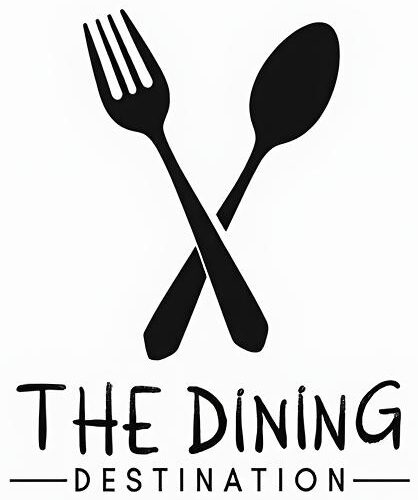
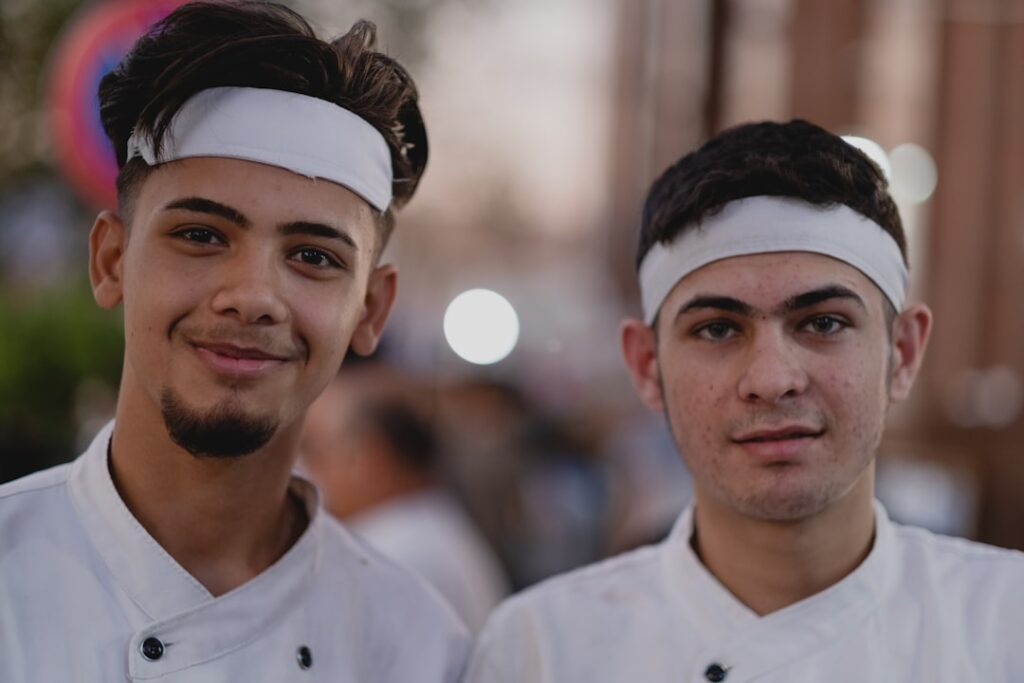

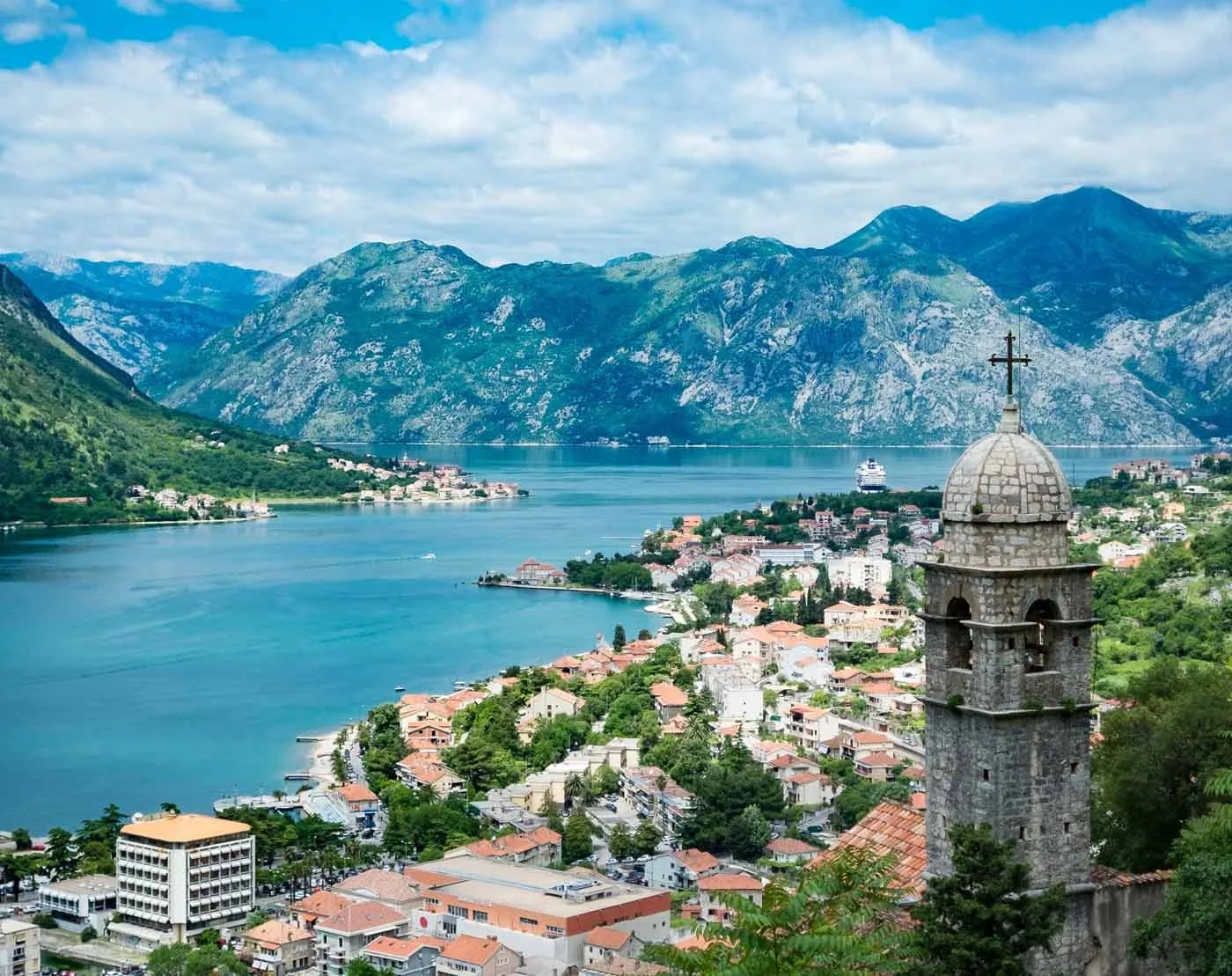



1 thought on “The Best Chefs in the World for Beginners”
Pingback: The Definitive Guide to Le Bernardin: Menu, Hours & Reservations - The Dining Destination
Comments are closed.